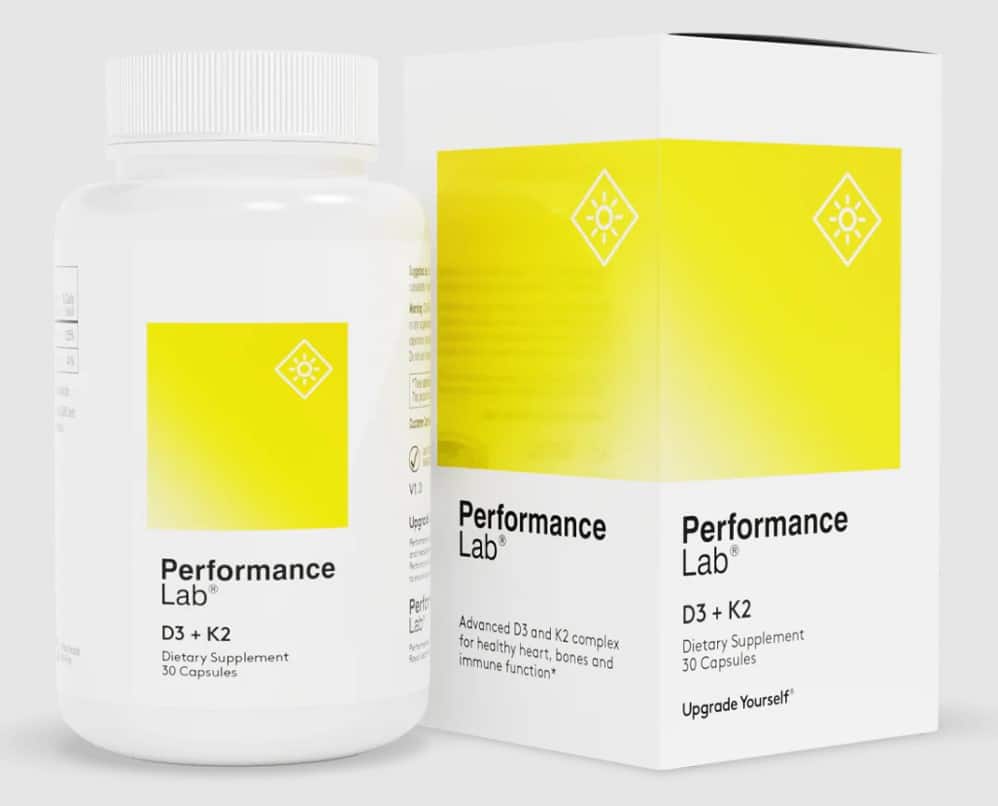Table of Contents
Vitamin D3 (cholecalciferol or calciol) is the fat-soluble steroid hormone form of Vitamin D. The “sunshine vitamin” is considered essential. Your skin synthesizes Vitamin D3 from ultraviolet-B (UVB) sunlight.
Nearly every tissue and cell type in your body and brain has Vitamin D receptors (VDR). It’s commonly associated with immune and bone health.
But Vitamin D3 as a nootropic supplement is critical for optimal cognitive health. It’s an integral part of neurotransmitter synthesis, gene expression, DNA maintenance and repair, and the forms of neuroplasticity needed for memory formation and retrieval.
Vitamin D deficiency (hypovitaminosis D) is an undeclared worldwide pandemic affecting nearly 50% of the population on this planet.
 The major cause of this Vitamin D deficiency is inadequate exposure to sunlight. Wearing sunscreen with a SPF of 30 reduces Vitamin D synthesis in your skin by more than 95%.[i]
The major cause of this Vitamin D deficiency is inadequate exposure to sunlight. Wearing sunscreen with a SPF of 30 reduces Vitamin D synthesis in your skin by more than 95%.[i]
Working and living indoors in our modern world contributes to this problem. Those with a naturally dark skin tone require 3 – 5-times longer sun exposure to the make the same amount of Vitamin D as those with a lighter skin tone.[ii]
Also at risk of Vitamin D deficiency is anyone who works indoors, breastfed infants, older adults, and anyone homebound, or who wear long garments for religious reasons. If you have fat malabsorption issues, obese, or on certain medications you are also at risk.
You risk a host of problems if you don’t get enough Vitamin D. Including Type-2 diabetes, depression, cognitive impairment, Parkinson’s or Alzheimer’s Disease among others.
Vitamin D exists in two forms. Vitamin D2 is obtained from the UV irradiation of the yeast sterol ergosterol and is found naturally in sun-exposed mushrooms. UVB light from the sun strikes the skin, and humans synthesize Vitamin D3, so it is the most “natural” form.
Note: I’ll be using Vitamin D and Vitamin D3 interchangeably throughout this review.
Supplementing with high quality Vitamin D3 is inexpensive and simple. If you could do one thing to improve the efficacy and potency of your nootropic stack. Add Vitamin D3 to your daily stack.
Find a high quality liposomal Vitamin D3 supplement for better absorption like the Performance Lab® Vitamin D3 + K2. And get some sun every day.
Here’s we’ll investigate what science has discovered in the last decade about how Vitamin D3 works in your brain.
Vitamin D helps:
- Neurotransmitters: Vitamin D3 with Omega-3’s are needed for serotonin synthesis, release and function. Regulating executive function, sensory gating, and social behavior.[iii] And Vitamin D3 is involved in the synthesis of GABA, glutamate and glutamine, and dopamine in the brain.[iv]
- Neuroprotective: Vitamin D3 protects against DNA damage through prevention of telomere shortening and inhibition of telomerase activity. And prevents oxidative damage to DNA.[v]
- Mood: Vitamin D3 is involved in neuromodulation, regulation of neurotrophic factors, neuroprotection, neuroplasticity, and brain development. All in areas of the brain associated with depression. Supplementation could be an important part of treatment of depression.[vi]
Overview
Vitamin D3 (cholecalciferol or calciol) is unique because it is not a standard vitamin. It’s actually a fat-soluble steroid hormone.
Vitamin D is mostly made in your skin from sun exposure. Not primarily from food like most of our other vitamins.

When Ultraviolet-B (UVB) light from the sun strikes your skin, your body synthesizes Vitamin D3.
Vitamin D that comes from your skin, or from food or a supplement, is not active. It first requires hydroxylation in your liver by the enzyme vitamin D-25-hydroxylase (25-OHase) to 25(OH)D.[vii]
Then 25(OH)D requires further hydroxylation in your kidneys by the 25(OH)D-1-OHase to form the biologically active form of vitamin D called 1,25(OH)2D (cholecalciferol).
You get some Vitamin D from foods like fatty fish (tuna, salmon, and mackerel), beef liver, cheese, egg yolks, and mushrooms. Some foods in the USA are fortified with Vitamin D. It’s added to breakfast cereals, soy beverages, yogurt and margarine. Check the nutrition fact panel on the food label.
Cholecalciferol is also produced industrially for use in nootropic supplements, and to fortify foods. It is produced using ultraviolet irradiation of 7-dehydrocholesterol extracted from lanolin in sheep’s wool.
Vitamin D3 directly or indirectly regulates the function of up to 2,000 genes in your body and brain.[viii] Vitamin D works in concert with Vitamin D receptors (VDR) located throughout your body and brain.
Recent research shows Vitamin D is involved in nerve growth factor (NGF) synthesis. Which is responsible for the growth and maintenance of neurons.
Vitamin D is also involved in neuron apoptosis. Studies have shown that low Vitamin D levels interrupts this cell cycle. Leading to several neurological disorders including dementia, Parkinson’s, MLS, epilepsy, and schizophrenia.[ix]
Alzheimer’s disease is associated with a decrease in Vitamin D receptors in the hippocampus. Lack of gene expression from insufficient Vitamin D contributes to Parkinson’s Disease.[x]
Hypovitaminosis D (low Vitamin D) is associated with an increase in proinflammatory cytokines and a decrease in anti-inflammatory cytokines. The increase in these specific cytokines is associated with the degradation of the myelin sheath. Leading to Multiple Sclerosis (MLS).
Studies are currently underway for using Vitamin D3 to reduce seizures in those dealing with epilepsy. The anticonvulsant effects are based on Vitamin D3’s ability to regulate the expression of genes. A process that is mediated by Vitamin D receptors.[xi]
Scientists and researchers in labs around the world continue to build on the knowledgebase for Vitamin D. And how the sunshine vitamin affects human cognition and overall health.
How does Vitamin D work in the brain?
Vitamin D boosts brain health and function in several ways. But two in particular stand out.
- Vitamin D helps relieve depression. Vitamin D activates genes that regulate your immune system and the release of neurotransmitters including dopamine and serotonin.
Research has also located Vitamin D receptors in areas of the brain linked to depression. A meta-analysis of clinical studies on depression and Vitamin D status including 31,424 participants showed that low Vitamin D concentrations is associated with depression.[xii]
One of several other studies on Vitamin D[xiii] and depression showed that older adults with low Vitamin D levels were 11-times more likely to be depressed than those with normal levels.[xiv]
And if you’re currently using antidepressants without much success, this next study may provide some hope.
A study conducted in Iran with 42 patients with major depressive disorder participated in a double-blind, randomized, placebo-controlled trial. One group received 1,500 IU of Vitamin D3 plus 20 mg of fluoxetine (Prozac®), or fluoxetine alone for 8 weeks.
In this 8-week trial, the vitamin D + fluoxetine combination was superior to fluoxetine alone in controlling depressive symptoms.[xv]
- Vitamin D is essential for learning and memory. Vitamin D has been shown to play a critical role in neuron cell growth and differentiation, neuron transmission, and the neuroplasticity that’s essential for optimal learning and memory.[xvi]
Vitamin D has been shown in the lab to protect against age-related cognitive decline. In one study conducted in Detroit, researchers worked with aged rats. Older rats have problems with cognitive testing. Along with elevated levels of pro-inflammatory cytokines, decreased levels of anti-inflammatory cytokines, and higher levels of amyloid-beta proteins in their brains.
Supplementing with Vitamin D for only 21 days reversed the inflammation and improved the clearance of amyloid-beta. Showing potential for using Vitamin D to prevent age-related cognitive decline.[xvii]
How things go bad
Vitamin D deficiency is a global health problem. Over a billion people worldwide are Vitamin D deficient.[xviii]
The major cause of this deficiency is the lack of appreciation that getting enough sun every day is the major source of Vitamin D for most people.
Very few foods contain Vitamin D. And foods that are fortified are inadequate to provide a child or adult’s daily requirement.
Top that off with the media and mainstream medical establishment hysteria about skin cancer. And the use of sunblock.
If you work indoors, wear ‘excessive’ clothing, use sunblock, are dark skinned, overweight, aged, or consciously avoid the sun, you are at risk for Vitamin D deficiency.
↓ Pathogens can inhibit Vitamin D receptors
↓ Lack of natural sun exposure depresses Vitamin D levels
↓ Caffeine inhibits Vitamin D receptors
↓ Testosterone levels decline
↑ Risk of bone fractures increases
↑ Increased risk of cancer, autoimmune disease, hypertension, infectious disease
↓ Severe Vitamin D deficiency can result in dementia and Parkinson’s and Alzheimer’s
↑ Increase in symptoms of depression
Vitamin D3 supplementation can help alleviate depression and improve learning and memory.
Vitamin D benefits
Not too long ago, Vitamin D was simply known as the ‘bone vitamin’. But there has been a surge in Vitamin D research over the last decade.
Out of that research, it was discovered that nearly every cell type and tissue in your body have receptors for this essential vitamin. And quickly changed how we understand the role of Vitamin D in the body.
We now know that Vitamin D deficiency is a problem worldwide. To put this in perspective, studies estimate 64% of Americans don’t get enough Vitamin D.[xix]
We now have clinical evidence that Vitamin D influences our autoimmune system, heart health, prevents infectious disease, and supports optimal cognition.
Vitamin D deficiency has been linked to Alzheimer’s and Parkinson’s disease, asthma, autism, depression, cancer, and diabetes.
A Japanese study found that 1,200 IU of Vitamin D daily reduced the risk of getting the flu by almost 50%.[xx]
One 7-year study showed Vitamin D deficiency substantially increased the risk of non-Alzheimer’s dementia.[xxi] Another 7-year study associated higher Vitamin D levels with a significantly lower risk of developing Alzheimer’s.[xxii]
Animal and human studies suggest that Vitamin D could help in the prevention and treatment of cognitive decline and dementia.
And a study published in the American Journal of Clinical Nutrition demonstrated Vitamin D supplementation is anti-aging because it increases telomere length.
How does Vitamin D feel?
If you work or spend most of your time indoors, you’re getting less sun than you should. And you may notice that your mood deteriorates relative to the amount of time you spend outside. This is especially noticeable in the winter if you live well north or south of the Equator.
 A capsule of Vitamin D3 in the morning is like a little dose of sunshine. You’ll feel brighter even on the grayest of days.
A capsule of Vitamin D3 in the morning is like a little dose of sunshine. You’ll feel brighter even on the grayest of days.
Many who supplement with Vitamin D3 report feeling happier. Energy levels are higher and feelings of depression stay away.
Some report a noticeable decrease in Fibromyalgia pain. Pain after exercise is less pronounced.
Seasonal depression is officially known as “Seasonal Affective Disorder” (SAD). Vitamin D3 is a potent remedy for many experiencing SAD. It’ll keep that winter depression at bay and reduce mood swings.
Many report that supplementing with Vitamin D3 reduces insomnia. Sleep is deeper and your mood is better the next day.
Vitamin D Clinical Research
Vitamin D may prevent autism
A study led by Professor Bruce Ames of Children’s Hospital Oakland Research Institute demonstrated that oxytocin, serotonin and vasopressin are all activated by Vitamin D.
Abnormal social behavior is one of the symptoms of autism. And has been previously linked to low serotonin and Vitamin D levels in the brain. This study shed light on the mechanism of action that could explain this relationship.
The study showed that Vitamin D activates the transcription of the serotonin-synthesizing gene tryptophan hydroxylase 2 (TPH2) in the brain at a Vitamin D response element (VDRE). And suppresses the transcription of TPH1 in tissues outside the blood-brain barrier.
The study explains that this mechanism shows how low Vitamin D hormone levels result in aberrant serotonin synthesis. Leading to abnormal brain development.
The study authors suggested that, “Supplementation with Vitamin D and tryptophan is a practical and affordable solution to help prevent autism and possibly ameliorate some symptoms of the disorder.”[xxiii]
Vitamin D may prevent dementia & stroke
Dementia is one of the greatest health challenges of our time. An estimated 44 million people worldwide suffer from dementia. This number is expected to triple by 2050 as the population ages.
A recent study at the University of Exeter Medical School found that adults who were slightly deficient in Vitamin D have a 53% increased risk of developing dementia of an kind.
That risk increased to 125% in those who were severely deficient in Vitamin D. The same study found that the moderately deficient group were 69% more likely to develop Alzheimer’s. And the severely deficient were 122% more likely to develop this disease.[xxiv]
Another study at the University of Heidelberg in Germany included 3,316 patients who were referred for evaluation of their arteries. Those with low Vitamin D levels were found to be more likely to have a fatal stroke within the next 7 years.
The researchers concluded, “vitamin D supplementation is a promising approach in the prevention of strokes”.[xxv]
Vitamin D for Seasonal Affective Disorder (SAD)
Seasonal Affective Disorder (SAD) is a mood disorder characterized by depression that occurs during fall and winter months when sunlight levels are low.
SAD typically coincides with a sudden drop in Vitamin D levels in the body. Several studies have suggested that SAD could be due to changing Vitamin D3 levels. Which affects serotonin levels in the brain.[xxvi]
One study with adults dealing with Vitamin D deficiency found that supplementing with 4,000 IU of Vitamin D daily for 2 months relieved their depression symptoms.[xxvii]
Another study recruited 441 people in an outpatient clinic in Norway. This randomized, double-blind trial had patients using 20,000 or 40,000 IU Vitamin D per week or placebo for 1 year.
Subjects with serum Vitamin D levels below 40 nmol/L were significantly more depressed than those with levels above 40 nmol/L. In the two groups given Vitamin D there was a significant improvement in depression symptoms after 1 year. But no improvement in the placebo group.
The study concluded, “It appears to be a relation between serum levels of 25(OH)D and symptoms of depression. Supplementation with high doses of vitamin D seems to ameliorate these symptoms indicating a possible causal relationship.”[xxviii]
Vitamin D recommended dosage
The Institute of Medicine recommends adults use 4,000 IU per day for Vitamin D3. Vitamin D is fat-soluble. So make sure you take it with a meal containing healthy fats. Or a tablespoon of unrefined coconut or olive oil.
A study published in the American Journal of Clinical Nutrition suggests optimal Vitamin D status is achieved with a serum (blood) 25-hydroxyvitamin D concentration >75 nmol/L (30 ng/mL)
 To achieve blood levels of 100 nmol/L, research has found that you need total daily Vitamin D supplementation of 4,000 IU.
To achieve blood levels of 100 nmol/L, research has found that you need total daily Vitamin D supplementation of 4,000 IU.
It is possible to get your daily dose of Vitamin D from the sun. And total-body sun exposure provides the equivalent of 10,000 IU of Vitamin D.[xxix]
But chances are none of us has the opportunity to sunbathe nude every single day to get our dose of Vitamin D.
To determine how much Vitamin D3 you needed to take to achieve optimal concentrations of this crucial vitamin, researchers recruited 138 volunteers for a 6-month randomized, double-blind, placebo-controlled trial.
The researchers found that if your blood Vitamin D status was less than 55 nmol/L you needed a daily intake of 5,000 IU. And for those above 55 nmol/L you needed a dose of 3,800 IU of Vitamin D3 per day.[xxx]
The Institute of Medicine also found that the dose for lowest observed adverse effect is 40,000 IU of Vitamin D daily for at least 12 weeks.
Get your Vitamin D levels checked. Be sure the lab tests for “25-hydroxyvitamin D”. To raise your blood levels of Vitamin D to optimal levels, you need to take 100 IU of Vitamin D3 for each 1 ng/mL you need to raise it.[xxxi]
Vitamin D Side Effects
Vitamin D is non-toxic. So is considered well-tolerated and safe.
Side effects are rare but can include dry mouth, fatigue, headaches, metallic taste, nausea, sleepiness and vomiting.
Doses of Vitamin D higher than 4,000 IU daily is possibly unsafe because it could cause excessive blood levels of calcium. But note that much higher doses are sometimes used for short-term treatment of Vitamin D deficiency. Get your labs done!
Vitamin D could worsen atherosclerosis (hardening of the arteries). If you have sarcoidosis, histoplasmosis, are hyperthyroid, have lymphoma, or tuberculosis Vitamin D could increase blood calcium levels causing kidney stones and other problems.
Vitamin D may affect blood pressure. So be cautious about using Vitamin D if you’re dealing with blood pressure disorders, are taking drugs or supplements that affect blood pressure.
Vitamin D may affect blood sugar levels. So if you’re taking drugs for diabetes or insulin you should monitor your Vitamin D levels and adjust medication as necessary.
Some drugs used to lower cholesterol, or treat psoriasis, calcium channel blockers, corticosteroids, and others may interact with Vitamin D. Check the University of Minnesota “Drug-vitamin D interactions’ for more.
Types of Vitamin D to buy
The preferred way of getting Vitamin D is by exposing your skin to the sun. But the color of your skin will affect the synthesis of this essential vitamin.
Lighter skin may require 45 minutes of exposure 3-times per week. Dark skin may require up to 3-hours of exposure 3-times per week.
But since most of us spend so much time indoors. And have the nasty habit of using sunscreen when we do go outside. To maintain adequate Vitamin D levels then using a supplement is best.
 Vitamin D3 (cholecalciferol) is preferred over Vitamin D2 (ergocalciferol), since D3 is the form your body synthesizes naturally.
Vitamin D3 (cholecalciferol) is preferred over Vitamin D2 (ergocalciferol), since D3 is the form your body synthesizes naturally.
A meta-analysis by the Cochrane Database investigated morality rates for those who supplemented with Vitamin D2 vs Vitamin D3. The analysis of 50 randomized controlled trials including 95,000 participants showed:
- A 6% risk reduction among those who used Vitamin D3
- A 2% risk increase among those who used Vitamin D2
The overwhelming evidence shows that you are more likely to die using Vitamin D2 rather than with D3.[xxxii]
So if your doctor prescribes synthetic Vitamin D2 (Drisdol), kindly decline and get a Vitamin D3 supplement at the vitamin shop.
Or get your Vitamin D3 from a high-quality multi like the Performance Lab® NutriGenesis Multi for men or women.
Or my favorite standalone Vitamin D3 supplement is the new liposomal Performance Lab® Vitamin D3 + K2. This Vitamin D3 supplement offers 1,000 IU of Vitamin D3 with 50 mcg NutriGenesis® Vitamin K2 to ensure calcium absorption into your bones. In a NutriCaps® Pullulan Capsule with zero toxic “other ingredients”. Just a pure nutrient that your body and brain can use soon after you take it.
I prefer the Performance Lab® brand of supplements because they are more potent, biologically active and I’ve found to be a far more effective compared to other supplements I’ve used.
Performance Lab® uses their own priority NutriGenesis® vitamins and minerals which are grown on probiotic, plant and yeast cultures in a state-of-the-art lab.
Vitamin D3 is also available in softgel capsules, tablets and as a liquid.
If you have trouble digesting fat, Vitamin D injections are also available by prescription.
Calcitriol is a synthetic Vitamin D analog available by prescription which is used by dialysis and hypo parathyroid patients.
Nootropics Expert Recommendation
I recommend using Vitamin D3 as a nootropic supplement.
Your body does make Vitamin D on its own by synthesizing it from UVB sunlight on exposed skin. Which is the preferred way of getting Vitamin D.
But all kinds of things can interfere with getting enough Vitamin D from sunlight. Fall and Winter in both hemispheres, cloud cover, smog, skin color, sunscreen, and too much clothing are all factors.
And most of us spend so much time indoors, to get its benefits you should take Vitamin D3 as a supplement.
It’s best if you get your Vitamin D levels checked. Be sure the lab tests for “25-hydroxyvitamin D”. To raise your blood levels of Vitamin D to optimal levels, you need to take 100 IU of Vitamin D3 for each 1 ng/mL you need to raise it.
Vitamin D is especially helpful for anxiety and depression. Vitamin D deficiency has been associated with depression, schizophrenia, psychotic symptoms and suicide.[xxxiii]
Vitamin D is also helpful for those dealing with autism, Alzheimer’s and Parkinson’s.
Doses should not exceed 10,000 IU daily unless supervised by a doctor. Vitamin D toxicity can happen with doses exceeding 40,000 IU per day for an extended period.
Vitamin D supplementation is one of the simplest and least expensive ways to optimize your brain. And should be part of every nootropic stack.
One great option is a high-quality multi containing a nature-identical Vitamin D3 like included in the Performance Lab® NutriGenesis Multi. It’s the best multi I’ve found and use every day. And add a separate liposomal Performance Lab® Vitamin D3 + K2 to your stack to ensure you maintain healthy Vitamin D levels.
Vitamin D is fat-soluble. So make sure you take your dose with a meal. Or a high quality fat like coconut or olive oil.
But please see the “Side Effects” section of this review for conditions and medication interactions before you start using Vitamin D.











Join The Discussion - 67 comments
David
February 19, 2025
Hi David, today i tried 8000ui of vitamin d. I usually take 4000ui per day. For the first time in 8 years i feel normal, no depression. last time i checked my vitamin d levels were 47 during the winter. i guess this is pretty normal during the winter?
my question is why do i feel normal on this high dose if im not deficient? (dont know if i am). Do you think i am deficient based on how i reacted to that dose?
David Tomen
February 19, 2025
David, your labs will only show you what your levels are. But they can’t show how you feel. I live in Ft. Lauderdale. People come down here for the sun. I was using 5,000 IU Vitamin D every day for years and thought I was doing great. But my labs showed I was low. I increased my dose to 10,000 IU and my labs are now ‘normal’. For me. that’s 80 nmol/L.
A study published in the American Journal of Clinical Nutrition suggests optimal Vitamin D status is achieved with a serum (blood) 25-hydroxyvitamin D concentration >75 nmol/L. In other words, 47 is way too low and why you were feeling so bad. I suggest you get your Vitamin D labs done again just to make sure 8000 IU per day is right for you. It sounds like it is.
R D
July 10, 2024
For the unwary reader, having mixed units, “ng/mL” in some places, while having “nmol/L” in others, can be confusing.
Can you edit it both of them, like some other publications do, so readers can see both at the same time?
Thanks.
David Tomen
July 11, 2024
RD, To convert nmol/liter to ng/ml, divide by 2.496
R D
July 11, 2024
The idea is that the reader shouldn’t have to grab a calculator to read the article.
Vitamin D is in a funny world with different units being used, that the casual reader might not be aware of.
I see you changed one place to show both units, but not the other.
David Tomen
July 15, 2024
Thanks for the suggestion but rather than getting buried in the numbers the best advice I can give you is get your Vitamin D labs done. And make sure your levels are between half and the upper third of the bell curve. If you are over then reduce your dose and get retested. If you are under then increase your dose.